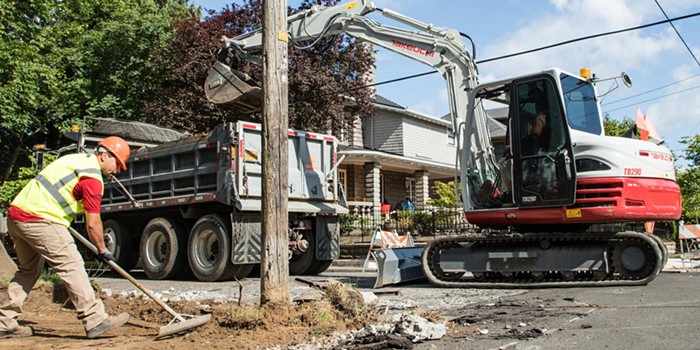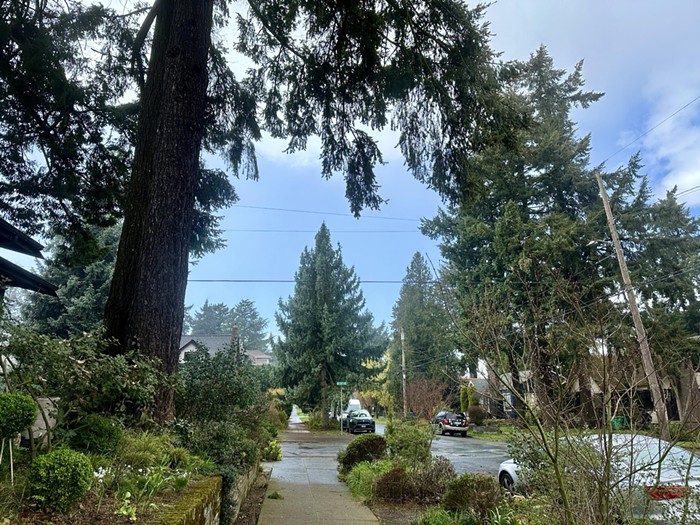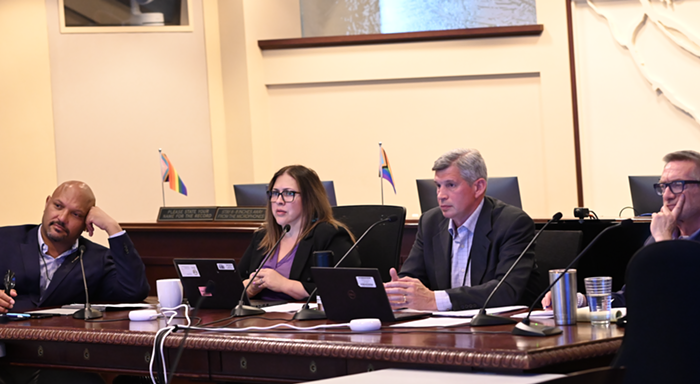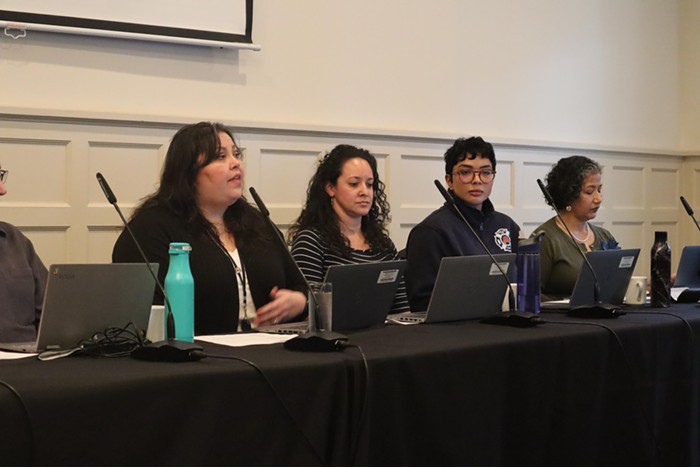THE DIRTY DUCK TAVERN on NW 3rd and Glisan is hardly the Sistine Chapel—the one-story building, originally intended as a garage, has been known more recently for its rundown wooden shutters and gay bear nights.
The bar closed last August, and now the building is the subject of a precedent-setting fight over historic preservation in Portland.
In 1989 the Portland Development Commission (PDC) nominated the Old Town/Chinatown historic district to the National Register of Historic Places. The Dirty Duck (or Kiernan Building) was included as a contributing structure.
Trouble is, PDC appears to have changed its mind: Just two years later, in 1991, it arranged to buy the Dirty Duck property for purposes of "blight removal" of the "obsolete" building.
The line of homeless people waiting for food at the neighboring Blanchet House routinely extends down the sidewalk. For years, developers in the neighborhood have been hoping to get that line out of sight. Now PDC is working with the Blanchet House to demolish the Dirty Duck and build a newer, larger facility where the former tavern currently stands.
"We have no other options," says Bill Reilly, a Blanchet House board member. "We've been looking at other sites for almost 10 years."
Once Blanchet has moved, PDC will take possession of the old Blanchet House building, on the corner of NW 4th and Glisan. That's the agency's latest idea, having previously offered Blanchet $2 million to move off the block.
But PDC's own decision to place the Dirty Duck building on the historic register back in 1989 may prove a significant roadblock: Preservationists don't want the neighborhood's inclusion on the register to become meaningless. They're ready to fight for the Dirty Duck as a matter of principle.
"Why is public money being used to tear down a nationally registered building?" asks Cathy Galbraith, executive director of the Bosco-Milligan Foundation, which focuses on historic preservation.
Lead architect Joe Pinzone with SERA, the firm contracted for the Blanchet House project, says they did consider preservation, "but from a reasoned point of view, it didn't make sense." Instead, SERA proposed a new eco-friendly building with LEED certification, which will make it eligible for tax credits.
"There wasn't any effort to at least include the skin," says Brian Emerick, an architect who sits on the Historic Landmarks Commission, "and preserve some of the material fabric of the building."
Pinzone says the Dirty Duck shouldn't even have been included in the historic district, because it has no Chinese history. Nevertheless, many now see its removal as ominous.
"Look at the historic district like a painting," says Tim Heron, a historic review specialist with Portland Bureau of Development Services. "If you tear off a corner, it will damage the value of the whole, and the first tear is the most destructive."
Historic Landmarks Commission Chair Art DeMuro, who is also a developer with properties in the neighborhood, says the group will issue a recommendation before city council votes on the building's fate on February 3. "I am confident that we're going to be very protective," DeMuro says.



















